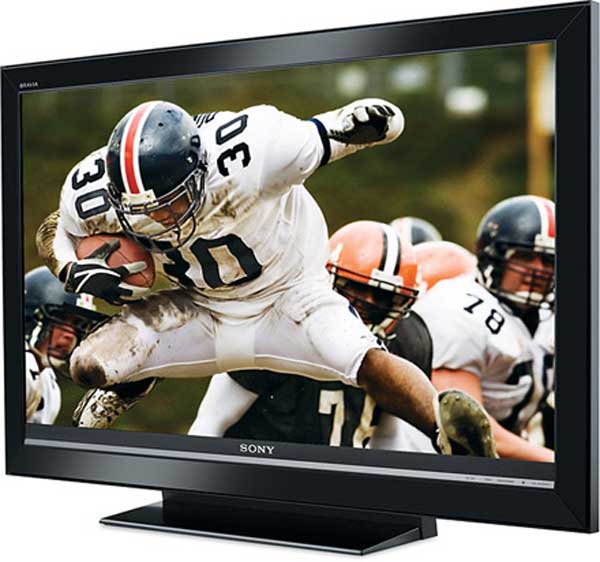
Hey, Couch Coach, here's your Fantasy Football draft challenge: Pick the perfect HDTV to bring home to watch Super Bowl XLIV this Sunday. Here’s what you should look for and what can you expect to pay.
HDTV, or high-definition TV, is becoming the only game in town. “Everything is pretty much hi-def right now,” said Andre Sam, a Blue Shirt home theater expert at Best Buy. “There are no tubes out there and very few standard definition sets.”
You won’t be alone. Over half of the fans who tune in to Super Bowl will watch it on an HDTV, according to Megan Pollock from the Consumer Electronics Association (CEA). Big games such as Super Bowl are a key driver of TV sales — Pollock said 28 percent of HDTV owners purchased their sets specifically to watch a major sporting event. Retail stores are more than willing to oblige, and many offer great deals on HDTV sets around game time.
Consider your needs
Two key considerations in picking a set, Sam said, are the size of the room where you’ll watch TV and whether you want a multimedia set good for gaming or a set that will only be used for watching TV and movies. HDTVs run the gamut in screen size from 19 inches to a room-gobbling 58 inches and larger and come in LCD, LED and plasma formats.
“If you’re going small, you have more options with LCD,” Sam told TechNewsDaily. “Plasmas are pretty much 42 inches and up.”
Aside from size, picking LCD, LED or plasma is largely a jump ball. They both offer a great picture, decor-friendly thin screens that can be mounted on the wall and a viewer-friendly wide viewing angle, meaning you don't have to be sitting directly in front of the TV to have a good viewing experience.
Get the world’s most fascinating discoveries delivered straight to your inbox.
The only downside with plasma sets, Sam said, is that they are susceptible to image burn-in on the screen when used for gaming or as a computer screen.
Desirable specs
The screen size you pick is more about room size and personal and/or pocketbook preference. Super-sizing costs more money. Two figures you see in specifications for HDTV sets, however, do correlate with the kind of picture you will get: screen resolution and refresh rate.
Screen resolution is a measure of how many lines of information are on the screen. The two current standards are 720p and 1080p. Both offer great pictures, Sam said, but 1080p is becoming the gold standard for higher-end models.
“720 is an awesome picture,” Sam said. “1080 is a great picture on steroids.”
It should come as no surprise that 1080p is pricier.
A more dynamic picture
Refresh rate is the number of times per second the screen image or frame is renewed; the standard for LCD and plasma TVs is 60 times a second, or 60Hz. But 120Hz and 240Hz sets are coming on strong. They produce a more dynamic picture, according to Sam.
“It’s a smoother overall picture, so it’s not going to break up so much," he said. "An average viewer can tell the difference in the overall quality.”
But again, more translates into more costly. That additional cost has a big payoff for sports fans, Sam added. Because there is less time between frames, motion appears smoother, reducing the tendency to blur during scenes with fast action. “You’ll be looking at a more dynamic picture,” he said.
With any flat panel set, Sam said, size does matter – the size of the room relative to the screen, that is. The distance between the screen and your seating area should be three times the width of the screen. “Anything less and that television is too large for the room,” Sam said.
That ratio provides the viewer with a 30-degree viewing angle, which The Society of Motion Pictures and Television Engineers (SMPTE) recommends for the best viewing experience. A 30-degree viewing angle means that users can sit anywhere from 30 degrees to the left or 30 degrees to the right of the center of the screen and not notice any reduction in image quality.
Once you make your pick and head to the checkout, what’s all this going to cost? LCD/LED sets will run you from around $229 for a 19-inch set to $2400 for a 55-inch screen, Sam said. If you opt for plasma, he added, to can expect to pay from about $1000 for 42-inches to $2500 for a 55-inch bad boy, cables not included.


